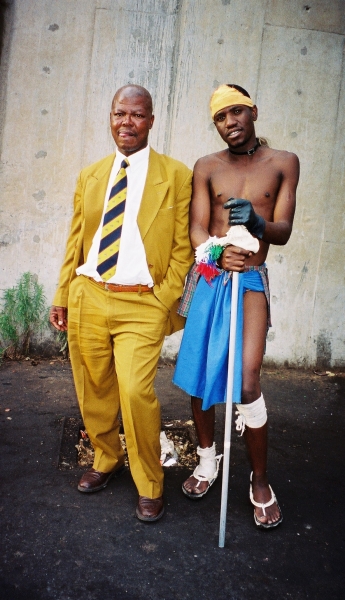History of the Dance
Ngoma, a men’s competitive team performance, is practiced in southern Africa through to Uganda, Tanzania and Kenya, with regional differences in style and shifts in meaning. Umzansi is one of three styles of Zulu ngoma song and dance. (Isishameni and isiBhaca are the others.)
Umzansi Zulu dance is often characterized as an “ancient war dance” of the Zulu, a “warrior nation”. While dancers celebrate imperial Zulu history and the prominent role that song and dance played in that history, ngoma developed through a history of migrant labor in the 20th century. Umzansi, the most dramatic of the Zulu ngoma styles, draws in part on the idea of the dancer as warrior.
For further information, see:
Clegg, Johnny. 2005. The Importance of Ending on the Off-Beat in Umzansi and Isishameni Dancing. Papers presented at the Symposium on Ethnomusicology, Number 18, 2004. Rhodes University, Grahamstown: 30-31.
Clegg, Jonathan. 1984. An Examination of the Umzansi Dance Style. Paper read at 3rd Symposium on Ethnomusicology, at Music dept., Papers presented at the Symposium on Ethnomusicology, 1983. Rhodes University, Grahamstown.
Erlmann, Veit. 1991. ‘Horses in the Race Course’: The Domestication of Ingoma Dance, 1929-1939. In African Stars: Studies in Black South African Performance. Chicago: University of Chicago Press.
Meintjes, Louise. 2004. Shoot the Sergeant, Shatter the Mountain: The Production of Masculinity in Zulu Ngoma Song and Dance in post-Apartheid South Africa. Ethnomusicology Forum 13 (3):173-201.
